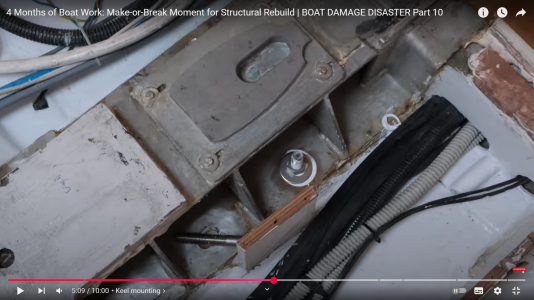Tranona
Well-Known Member
It is all about context, hence my use of the word "categoric" earlier. I bought my Eventide - shallow draft bilge plates in 1980 in Poole where water is thin on the ground over most of the harbour. In the first 10 years or so I think we actually dried out or hit bottom 3 times, the first two voluntarily in Studland where you are not allowed now and the third involuntary by straying too far off the main channel. In 1992 I removed the plates and deepened the keel draft to 1m from the original 2'2". With a new rudder it was a vast improvement and reflected the fact that I spent more time sailing out of the harbour than inside, but was still able to navigate the channels.I hear what you're saying, but I don't think that your keel only gets bumped on the bottom when deliberately drying out in tidal waters. Unintended groundings on hard sandy bottoms (eg in the Med) will put similar stresses on a hull. People are of course welcome to cruise in boats that can't cope with that, but it's not my idea of a cruising boat.
That said, it's obviously all compromises - I think we'd all want a boat to survive a bit of a bump, but how much of a bump exactly, given the cost in terms of weight and build cost? I had a steel boat once that would probably have been fine after being dropped a couple of feet onto concrete, but it was maddeningly slow under sail, no doubt in part due to its great weight.
Looking wider boat designs adapt to the environment in which they are used - so if you are a rich New Englander who wants to spend the winters in the Bahamas then your boat of choice is probably a long keel centreboard Alden, Hinckley, Bristol etc. If you are going to explore the Pacific Islands then a steel long keeler might be the weapon of choice. Scandinavian boats are strongly constructed in the keel are because there are a lot of rocks in places that are nice to sail - don't expect decent anchoring arrangements though as tying up to a tree or rock from the bows is the norm.
For the vast majority of the worlds' sailors the standard fin keel is perfectly adequate for cruising so that is what is built in volume and people use them in a way that recognises their properties.

